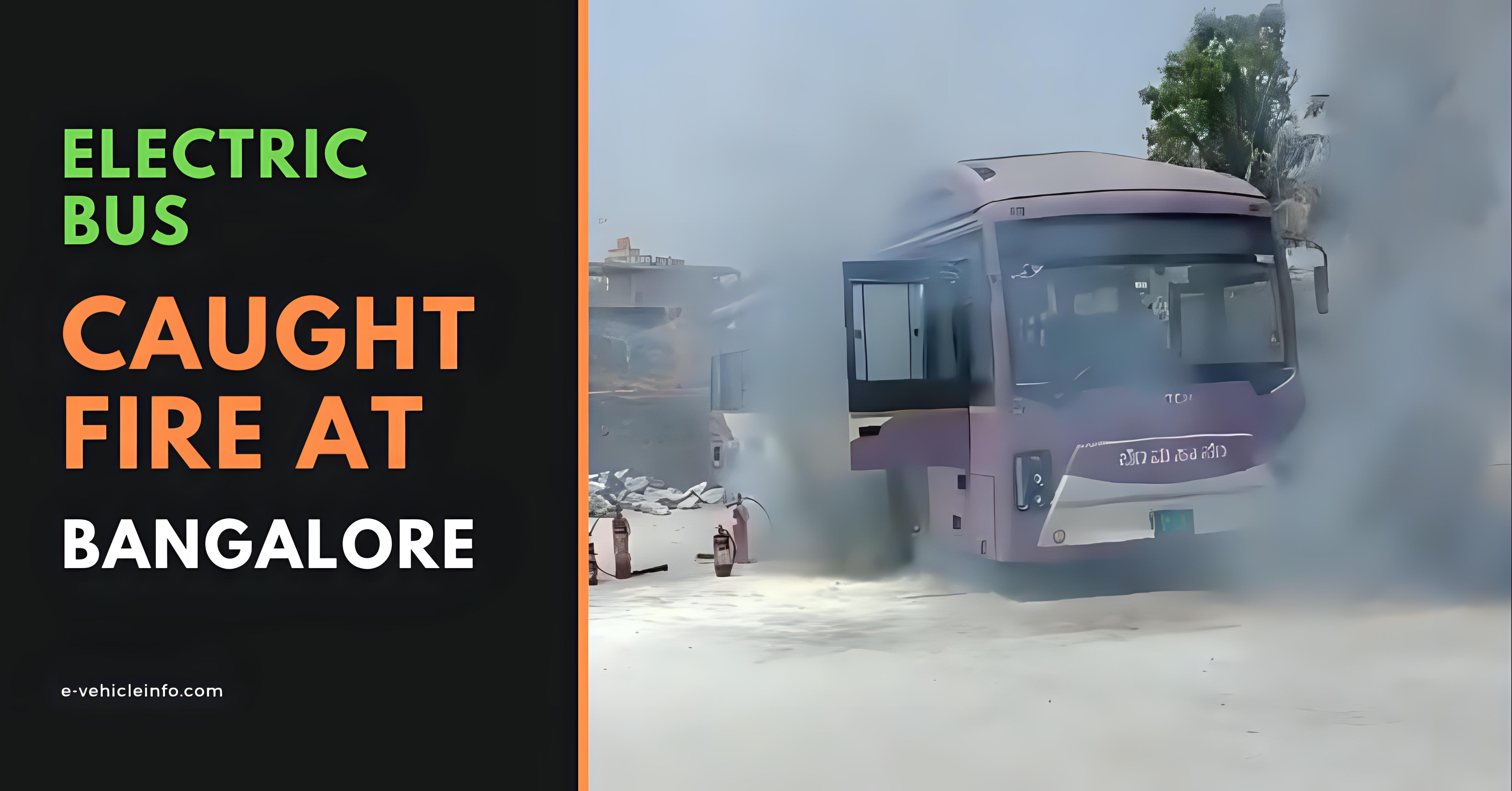
A close call was averted yesterday as a Bengaluru Metropolitan Transport Corporation (BMTC) electric bus EiV 12 went up in flames at the Bidadi depot (49). Thankfully, there were no reports of injuries.
The bus, identified as a BMTC Switch Mobility (AL) non-AC electric bus, a subsidiary of Ashok Leyland, caught fire while stationed at the depot. Huge clouds of black smoke filled the air as people stood aloof.
The causes of the fire are not known as of now, as no official statement has been released by the Managing Director of BMTC Mr. Ramachandran R.
A BMTC Switch (AL) non-AC electric bus caught fire at Bidadi depot (49). No injuries have been reported@BMTC_BENGALURU pic.twitter.com/coxy0UM8kO
— ChristinMathewPhilip (@ChristinMP_) April 5, 2024
Table of Contents
Electric Bus Fire Accidents in India
Well, this isn’t the first time such an incident has been reported. In 2022 a similar report came from Hyderabad where the electric bus was ablaze.
Specifications of EiV 12 Electric Bus of Switch Mobility
EiV 12 Ultra-low entry | EiV 12 Standard |
| Permanent Magnet Synchronous AC Motor; 235 KW Peak, 140 KW Continuous; 3100 Nm Peak | Permanent Magnet Synchronous AC Motor; 235 KW Peak, 140 KW Continuous; 3100 Nm Peak |
| Advanced Lithium-Ion NMC chemistry with Modular battery options | Advanced Lithium-Ion NMC chemistry with Modular battery options |
| Full Air Suspension | Full Air Suspension |
| 300 km with a single charge and up to 500 km/day with dual gun charging | 300 km with a single charge and up to 500 km/day with dual gun charging |
| Charge: 1.5-3 hours | Charge: 1.5-3 hours |
*The only difference between these two variants is the dimensions*
Why do Electric Buses catch Fire?
There isn’t any concrete reason as to why this happened but let me assure you that, the fire in electric buses is very different from traditional buses.
Electric bus fires face unique challenges compared to traditional diesel buses. The low-floor design of electric buses, meant to improve accessibility for passengers, necessitates placing battery packs on the roof instead of within the chassis like passenger electric vehicles. This roof-mounted placement, while allowing for easier retrofitting of existing diesel buses and potentially requiring less cooling during travel, poses difficulties when they need to be extinguished.
Throwing water on a roof-mounted battery pack with water during thermal runaway is a process where batteries overheat and self-ignite, proving to be a complex task. The early observations from such incidents highlight the concerning rate of fire spread when thermal runaway occurs at charging hubs, likely due to the roof-mounted battery placement.
What should be done in case an electric bus catches fire?
This incident underscores the importance of prioritizing safety measures for the BMTC’s growing electric bus fleet. Further investigations are needed to pinpoint the cause of the fire and implement stricter protocols to prevent similar occurrences in the future. The BMTC must also ensure that firefighters are adequately equipped and trained to handle electric bus emergencies effectively.
Read More: A Burning Question: How Can We Tackle Electric Vehicle Fire Incidents?






